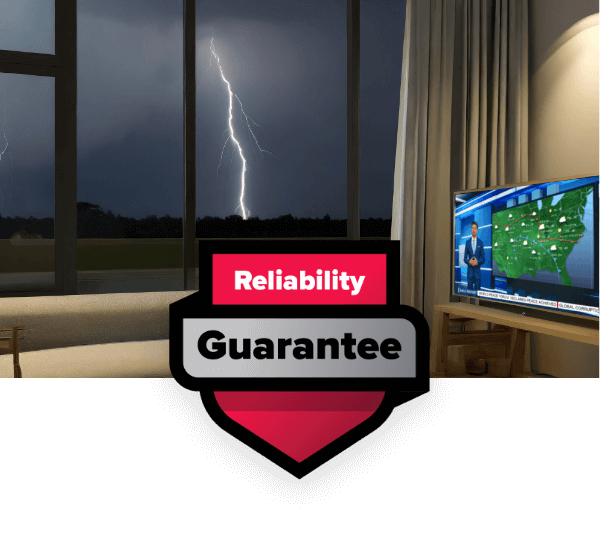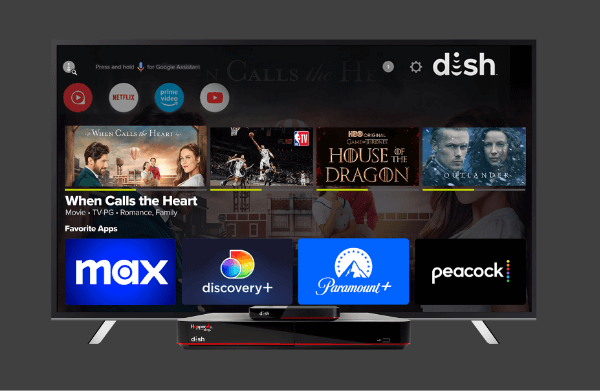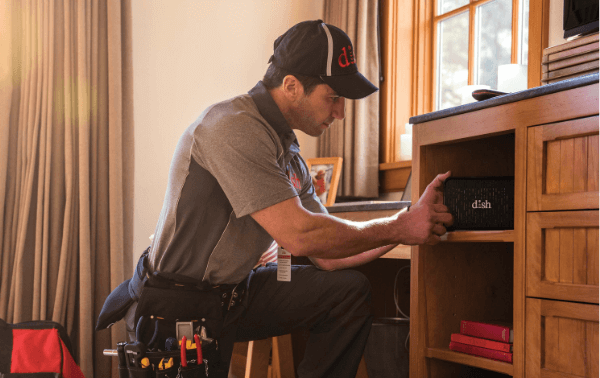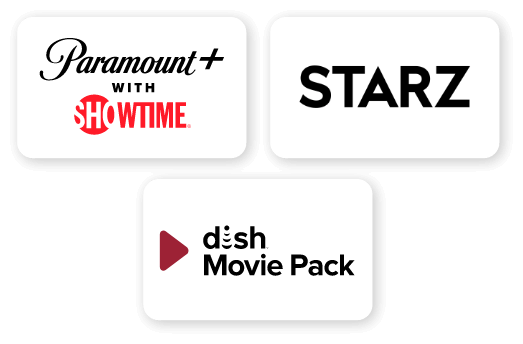How Does Satellite TV Work?

Table of Contents
When satellite TV first hit the market, satellite dishes were not what they are today. Back in the 90s, early satellite TV viewers had to put up with the expense of installing heavy metal units in their backyards for access to satellite television.
Early satellite television was archaic. And only the most dedicated satellite owners would go through the hassle of installing their satellite dishes to broadcast TV.
Nowadays, the process is a little different. Cable TV companies like DIRECTV and DISH Network, offer you much simpler (and modern) solutions to broadcast television with a satellite system.
Satellite TV today is a wireless system for delivering programming directly to a viewer’s house. There’s very little difference between broadcast TV and satellite, as they’re both digital now.
It’s no secret that cable and satellite TV usage has declined in recent years. In fact, 71 percent of adults say they no longer use cable or satellite services for their entertainment.
But, about 56 percent of adults still prefer to watch TV through cable or satellite services. And with all the improvements made to the technology, the chances of satellite TV customers sticking to the service are likely to increase.
Here’s everything you need to know about how satellite TV works.
Satellite Terminology
Before diving into how satellite TVs work, it’s helpful to familiarize yourself with key terms.
- Broadcast Antenna. The main role of antennas is to transmit radio waves. They’re specifically built for the transmission of radio signals in satellite TV.
- Radio Signal. It’s a form of electromagnetic wave that transmits and receives messages.
- Satellite. This is what enables you to broadcast TV when you’re using satellite TV. This main satellite is an electronic communications relay station in the geosynchronous orbit. Geostationary satellites orbit the earth in a part of space that scientists refer to as the “Clarke Belt." This area of the earth is approximately 22,300 miles above the equator. The satellite moves in a fixed orbit at the same speed and direction as the earth.
- Satellite Receiver. The receiver is what helps separate a particular signal from all the other signals the broadcast center receives. This device aids in the process of converting the signal format into one that can translate video, voice, and data.
How Does a TV Satellite Dish Work?
Satellite TV works by transmitting signals from a broadcast antenna to space with the help of a satellite. The signal starts at home and it comes from your TV channels. Commonly referred to as “programmers," TV channels send their feed to your TV provider. Once your TV provider receives signals, it uses a broadcast satellite to beam the data to space.
Satellite TV System
There are major components involved in the way satellite works. To provide programming to your television set, you need certain equipment to make it all work. Early pioneers of this system had to go through a lot of trial and error to find the best way to reach a viewer’s house through digital broadcast satellite.
Today, programming is completely digital. This means that a provider’s broadcast comes with a better quality of video and audio. The five major components involved in direct broadcasting. They are: 1) the programming sources, 2) the broadcast center, 3) the satellite, 4) the satellite dish, and 5) the receiver.

Programming Sources
A programming source is a fancy way of referring to the channels that provide programming for the broadcast. Unlike earlier programming, this process is much simpler than it used to be. Today, cable TV companies work more efficiently to be able to provide you with Direct Broadcast Satellite (DBS). This is what providers like DISH Network do for their customers.
The way it works is simple. Your provider presents you with TV packages that approximate what the competition offers. Your provider doesn’t create original programming, but rather it pays companies like ESPN for the right of delivering television programming directly.
It’s a way for your satellite provider to act as a broker between you and the actual programming sources. And since most satellite TV is encoded digitally, it enables satellite broadcasters to offer more television channels using the same amount of satellite bandwidth.
The Broadcast Center
This is like the central office of the entire satellite TV operation. The broadcast center is where your provider receives the signals from multiple programming sources. Once it receives, it then beams the broadcast signal out to space to one of the multiple satellites in the geosynchronous orbit.
The Satellite
Think of the satellite as a pit stop in the process. This is where the reflected signal from the different broadcast stations stops before the satellite rebroadcasts the signal back to earth.
The Satellite Dish
This is the physical structure that receives the signal from the space satellite. The viewer’s dish picks up the signal from the satellite and then passes it to the receiver in your home.
The Satellite Receiver
The satellite receiver processes the signal and is responsible for broadcasting video on a standard TV.
Satellite TV FAQs
How Much Does Satellite TV Cost Per Month on Average?
Cable companies vary in their pricing. However, satellite TV can cost between $40 and $150 depending on the service and provider you choose.
What Equipment Do I Need for Satellite TV?
The basic equipment you’ll need to make satellite tv work at home is a dish antenna and a receiver. These are the two main devices that you need for video and audio signals to be broadcasted from geostationary satellites to satellite dishes on the Earth’s surface.






 Call
Call 

 Access Your Account
Access Your Account